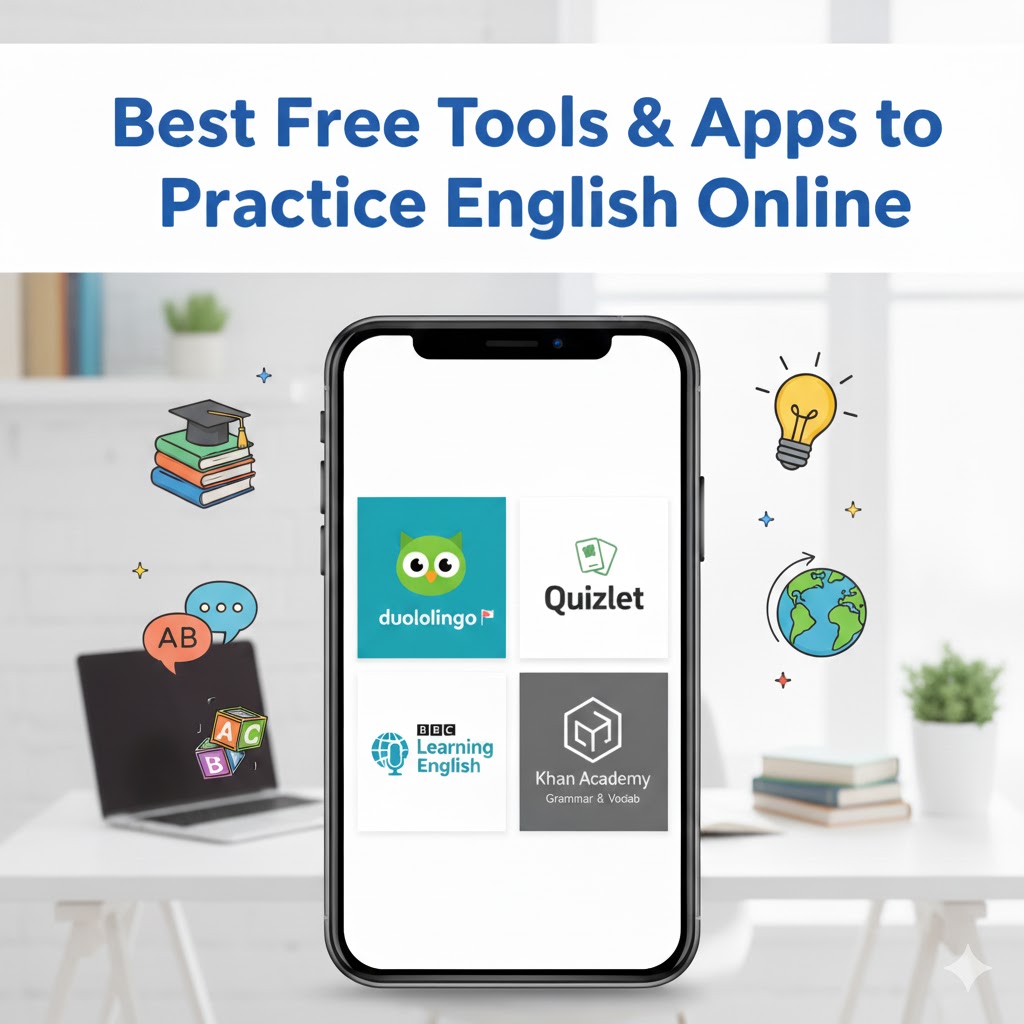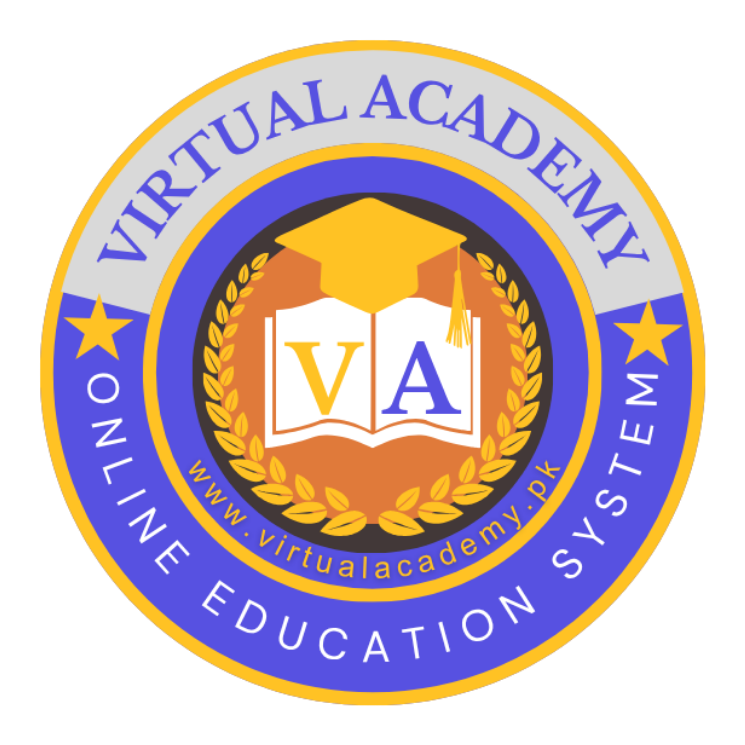
Best Free Tools & Apps to Practice English Online
Introduction
Whether you're preparing for college, upgrading your job skills, or simply hoping to chat confidently with English-speaking friends, you probably already know one thing: practicing English matters — a lot. Here’s a surprising fact: according to a survey by the British Council, consistent exposure to English multimedia (like podcasts, videos and apps) correlates strongly with higher long-term retention in second-language learners. That means time spent casually listening or chatting really adds up.
For students, however, time is limited and budgets may be tight — so choosing the right free tools becomes a strategic move. In this article I’ll walk you through top free apps and online platforms you can use to practise all four key skills (listening, reading, speaking, writing). You’ll learn why each tool works (experience, expertise, authority, trustworthiness), how they align with real-student needs, and how to make them work for you. After reading, you’ll have a clear roadmap to choose, combine and schedule these resources to improve your English in a measurable way.
Why Free Doesn’t Have to Mean Weak
Before diving into specific apps, it’s helpful to understand why free tools can be fully valid — and how to pick ones that meet quality criteria:
-
Experience: Choose apps developed by language-learning experts, educators, or organisations with a proven track record.
-
Expertise: The tool should scaffold through levels, give timely feedback, offer varied formats (audio, visuals, interaction).
-
Authoritativeness: Prefer apps trusted or recommended by recognised institutions (universities, councils, language-centres).
-
Trustworthiness: Check that the free version isn’t purely a marketing gateway to a high-cost subscription (so you won’t feel misled).
In short: free doesn’t mean “less effective” — but it can if the tool lacks structure, feedback, or purposeful design. That’s why I’ve selected apps that not only cost nothing (or offer robust free tiers), but also align with student-intent (for example: improving conversation, preparing for tests, practising real-life tasks).
Section 1: Beginner & Foundation Skills — Build Your Base
Gamified Apps for Vocabulary, Grammar & Motivation
At the start of your journey, you need an app that keeps you engaged while building the basic blocks of language: vocabulary, grammar patterns, simple listening. Cue in the power of gamification, progress-tracking, short bursts of study.
● Duolingo
One of the most well-known free apps — with millions of users, and lessons built by language-learning professionals. It presents bite-sized lessons (20 minutes or less) that cover reading, listening, speaking and writing.
How students use it: Set a daily streak; complete 5-10 minutes after class each day; focus on the modules flagged “English (US)”.
Actionable tip: After finishing a lesson, write out one full sentence you heard or created — then record yourself saying it. Repeat tomorrow.
Why it matters: Provides broad exposure, builds momentum, reduces “blank page” anxiety when practising language.
● HelloTalk (Language Exchange)
When you’re ready to use your English, not just learn it, HelloTalk connects you with native speakers or fellow learners for chat, voice messages, corrections.
How to use: Create a free profile, mention you’re a student of English, set your native language; pick an “exchange partner” (someone learning your language in return). Use voice or text to ask and answer simple questions (“What did you do today?”, “What do you like?”).
Actionable tip: Use the “Moments” feature (in the app) to post one short English sentence daily and invite native speakers to correct it.
Why it matters: Real-world practice builds confidence and helps you apply what you’ve learned in lessons to live conversations.
Section 2: Intermediate Skills — Listening, Speaking & Real-Life Use
Tools to Move from Classroom to Conversation
Once you’ve covered the basics, the challenge shifts: you need to connect your knowledge with real-life usage. That means authentic listening (podcasts, videos), speaking practice (controlling your voice, fluency), and reading/writing in context.
● ELSA Speak
This is an AI-powered app that focuses on pronunciation and speaking confidence. It guides you in real-time feedback and lets you choose accents (American, British, etc.).
How to use: Record yourself pronouncing short phrases; compare your pronunciation via the app’s AI feedback; focus on sounds you struggle with (e.g., “th”, “r”, vowel lengths).
Actionable tip: Pick a day of the week (for example, Wednesday) to practise for 10 minutes on ELSA. After your session, speak the same phrases to a friend (or record a video) and evaluate improvement over time.
Why it matters: Pronunciation is often overlooked by students, yet it strongly affects how understandable you are and your confidence in speaking.
● British Council: LearnEnglish Apps
The British Council offers a suite of free apps and games designed for learners of different levels. Their approach has research-based backing (organizational expertise) and a strong reputation.
How to use: Use one of their quiz or grammar apps during transit or between classes; for example, “LearnEnglish Grammar” for short bursts of revision.
Actionable tip: Keep a log: every day you spend 5 minutes on one of the apps, note one sentence you learned. E.g., “Despite the rain, we still went outside.”
Why it matters: These structured mini-lessons strengthen your accuracy (grammar, vocabulary) so that when you speak or write, you make fewer avoidable errors.
Section 3: Advanced Skills & Fluency — Apply English Like a Native
Resources for Real-World Immersion and Active Use
At the advanced level, students benefit most from immersing themselves in authentic material, practising independently and interacting with content they find personally meaningful. It becomes less about “lesson 1, lesson 2” and more about “use the language to think, communicate, create.”
● Tandem (Language Partner Platform)
This app connects learners with native speakers for text, voice and video chats, with the goal of mutual exchange. From a review: “You can schedule meetings with real people… unlimited translations … voice messages.”
How to use: Pick a topic you care about (music, movies, technology), set it as your conversation theme, and reach out to a partner. For example: “Hi, I’m a student from Pakistan/Pakistan-region who loves [topic] — would you like a 15-min chat?”
Actionable tip: After each chat, write a short summary of what you discussed (2-3 sentences). Return to it the next day and refine it (use new vocabulary instead of simple terms).
Why it matters: Real conversations push you into unpredictable territory — that’s when fluency grows, when you use the language rather than just learn about it.
● Media-Based Learning: Using Video, Podcasts & Real Material
According to experts, listening to varied content (lectures, dialogues, news) and interacting with it makes a big difference. For example, one resource names apps that use “real-world videos… commercials and news” to create English learning experiences.
How to use:
-
Pick a 5-minute clip in English (YouTube, TED talk, student vlog) related to your interest.
-
Watch it once with subtitles, then again without.
-
Pause and write down one phrase you liked or didn’t understand.
-
Use that phrase in a sentence of your own.
Actionable tip: Create a “Media Diary” where you note: Date – Tool – Material – 1 phrase learned – 1 sentence I used it in. Do this 2–3 times a week.
Why it matters: It gives context, culture, nuance — and helps connect your vocabulary & grammar to actual usage, which boosts retention and mastery.
Section 4: How to Combine These Tools into a Student-Friendly Routine
Designing Your Weekly Plan
Here’s a sample weekly routine that blends the tools above, tailored for a busy student:
| Day | Activity | Tool | Duration |
|---|---|---|---|
| Monday | Vocabulary + fundamentals | Duolingo | 10 min |
| Tuesday | Pronunciation / speaking drill | ELSA Speak | 10 min |
| Wednesday | Grammar revision | British Council Grammar App | 5 min |
| Thursday | Media immersion (video/podcast) | YouTube/TED + Notes | 15 min |
| Friday | Live chat with partner | Tandem / HelloTalk | 15 min |
| Saturday | Reflection & sentence-writing | Combine notes from week | 10 min |
| Sunday | Rest or casual English usage (music, game) | Free choice | — |
Tips for Staying Consistent
-
Make it visible: Set a reminder on your phone or calendar.
-
Keep it short: 5-15 minutes is effective and manageable.
-
Hold yourself accountable: Join a study group or share your progress with a friend.
-
Mix it up: If one tool feels stale, switch it for the week but keep the skill focus.
-
Track your progress: At the end of each month, review three sentences you wrote or said and compare them to your originals.
Avoiding Common Pitfalls
-
Only doing drills: If you only use apps without real communication or authentic content, you’ll learn vocabulary but not use it.
-
Fear of making mistakes: Remember: errors are a key part of growth. Live-chat, speak out loud.
-
Overwhelm: Using too many apps can cause fatigue. Better fewer, consistent than many sporadic.
-
No review: If you never revisit words or phrases you learned, you’ll forget them. Spaced repetition and review matter.
Section 5: Frequently Asked Questions (FAQs)
Q1: Are free tools really enough to reach fluency?
Yes — if you use them strategically and combine them with authentic practice. Free apps can build the foundation (grammar, vocabulary, pronunciation), and when paired with real-life chats and media immersion, you’ll cover all four skills (listening, reading, speaking, writing). The key is consistency rather than cost.
Q2: How much time do I need per week?
Even 30 minutes spread across the week (for example, five sessions of ~6 minutes) can yield measurable improvement. What matters most is regularity. Building a habit of daily or near-daily exposure makes the difference.
Q3: Which skill should I practise first — speaking or writing?
There’s no strict order, but a good path is: listen → read → speak → write. Listening gives input, reading gives context, speaking helps you output in real time, writing gives time to reflect and refine. So a routine that includes all four is ideal.
Q4: How can I measure my improvement?
-
Record yourself at two points (e.g., now and in six weeks) speaking about the same topic and compare fluency, hesitation, vocabulary usage.
-
Keep a “mistake log” (common errors you make) and track when you stop making them.
-
Take a short self-quiz or use an app with level tests. If you feel more confident in conversations, that’s a strong qualitative indicator.
Q5: What if I don’t have a native partner to chat with?
No problem! Apps like HelloTalk and Tandem give you access to global peers and native speakers. You can also record voice diaries and listen back, or practise speaking to yourself out loud (yes — talking to yourself works) as many learners have found.
Tags :
No Tags












0 Comments